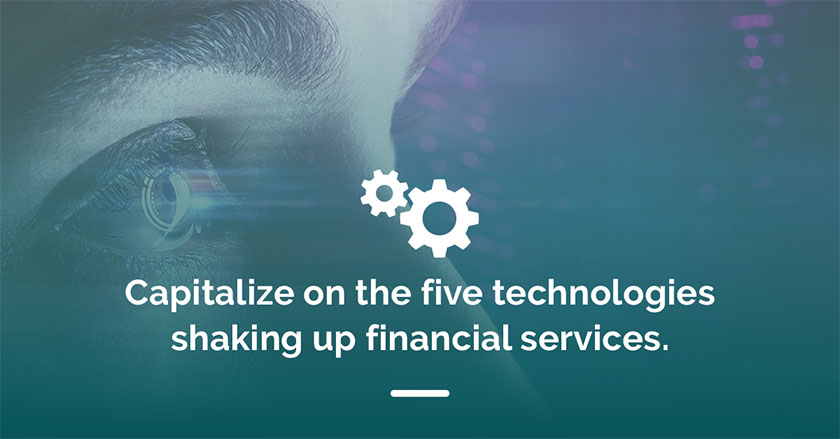Fintech Insights
The Five Technologies Shaking Up Financial Services
Tony Warren, executive vice president, head of strategy and solutions management, FIS
October 16, 2019

Only 24 percent of financial services executives see emerging technologies as an opportunity, while a further 18 percent see it as a threat, according to FIS’ research into the growth readiness of buy- and sell-side firms. But these technologies are being adopted more quickly than many may realize, and we can’t stop them. So what do you need to know to make sure that you can capitalize on them rather than fall behind?
First, let’s define the five technologies that are reshaping the industry:
- Robotic process automation (RPA). RPA is already embedded in most operations through workflow tools and process automation. However, given the large inflows into index tracking, passive funds and ETFs and the resulting downward pressure of costs, RPA will become even more prevalent. By applying RPA to the processing of these funds, firms can automate and streamline exception management and therefore save costs and free up resources.
- Machine learning. Machine learning starts with operators controlling the “robot” (which is really simply a computer) to perform repetitive tasks. As the robot learns the process, it no longer needs the operator, and it simply completes the tasks on its own without intervention.
- Artificial intelligence (AI). In a step up from machine learning, the robot starts to make its own decisions. It lets you go down a decision path and truly automate tasks. It’s a little futuristic, but we are starting to see AI in action across the front, middle and back office.
- Blockchain. Also known as distributed ledger technology (DLT), blockchain is a classic industry disruptor. It lets firms replace multiple data sets with a single data set that is agreed upon by multiple parties. Yes, it’s the famous (or infamous) “golden copy.” But there are two significant differences from existing data management strategies. First, the parties agree at the start rather than at the end of the data aggregation process. Second, that agreement triggers a series of tasks down the chain that results in the golden copy. This has long been a sought after goal, but blockchain could turn it into a reality.
- Digital channels and digital distribution. With a digital approach, once a transaction has been executed and validated, the position, the accounting and related calculations could be completed within minutes. The data would then be easily accessible on a real-time basis to any interested party through web portals, mobile devices, etc. And they’d be able to easily interact with the data through data mining.
So how do you take advantage of the disruption that’s on the horizon instead of becoming a victim to it?
The answer is revealed by our research. We measured more than 1,000 respondents against six operational principles:
- Data management
- Automation
- Emerging technology
- Digital innovation
- Talent
- Customer experience
Those who scored in the top 20 percent – the Readiness Leaders – are not only further advanced than the rest of the industry across all six pillars; they are also growing twice as fast.
And it’s clear that the Readiness Leaders view these emerging technologies as a critical enabler of growth: 37 percent of these institutions have implemented AI or machine learning in their business, compared to just six percent of the rest of the industry. And 41 percent of leaders are currently testing blockchain solutions, versus just 19 percent of other institutions.
Where are the leaders applying these technologies? According to our research, 43 percent are using AI to automate operations, 42 percent are using it for risk management, and 41 percent are applying it to performance analysis.
When it comes to blockchain, 47 percent are focused on collateral management, 42 percent on regulatory reporting, and 36 percent on clearing and settlement.
The Readiness Leaders show that implementing emerging technologies in these areas can help boost performance. The hunt for growth is on. Firms that can marry these technologies with new business models could create a compelling new value proposition that drives significant competitive advantage.
Are you ready to rise?
Take our benchmark tool to measure your growth readiness or explore all of the FIS™ Readiness Report insights at fisreadinessreport.com.
Tags: Digital, Innovation, Data Management & Analytics, Technology